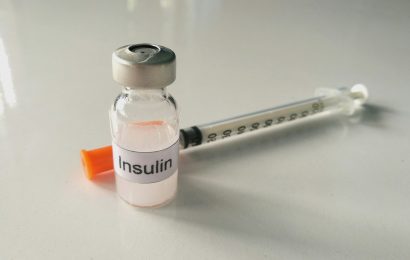Key Points:
- A1C measures average blood sugar over 2 to 3 months and is crucial for managing diabetes. A lower A1C can reduce the risk of complications like nerve damage and heart disease.
- Diet adjustments, portion control, and consistent carbohydrate intake are key to lowering A1C levels naturally.
- Regular exercise, including cardio and resistance training, helps lower blood sugars and A1C while improving overall health.
Call it what you will: hemoglobin A1C, glycosylated hemoglobin, HbA1c, or simply “A1C” — this number plays a major role in diabetes management. It’s also used to diagnose diabetes and prediabetes. A1C is a blood test that measures your average blood sugar levels over the past 2 to 3 months. Your provider and diabetes care team use this number to assess your progress and adjust your treatment plan if needed.
For most people with diabetes, the American Diabetes Association (ADA) recommends an A1C of less than 7%. The American Association of Clinical Endocrinologists (AACE) suggests a more stringent target of 6.5% or lower. Your goal might differ, and that’s perfectly fine — just be sure you know what it is!
Why lower your A1C?
A1C goals aren’t chosen at random. The targets recommended by the ADA, AACE, or your healthcare provider are based on clinical research and factors such as your age, overall health, and risk of hypoglycemia (low blood sugar). Landmark studies, including the Diabetes Control and Complications Trial (DCCT) and the Epidemiology of Diabetes Interventions and Complications (EDIC), have shown that lowering A1C reduces the risk of diabetes-related complications. For every one-point reduction in A1C, the risks decrease as follows:
- Eye disease by 76%
- Nerve damage by 60%
- Heart attack or stroke by 57%
- Kidney disease by 50%
It’s important to understand that A1C reflects an average of your blood sugar levels over 2 to 3 months. For example, an A1C of 6.7% could indicate frequent low blood sugars, which might not reflect balanced blood sugar management.
For this reason, A1C should be viewed as part of a larger picture, alongside factors like daily blood sugar readings, the frequency of highs and lows, and your overall quality of life. These elements together form the foundation of effective diabetes management.
To get cutting-edge diabetes news, strategies for blood glucose management, nutrition tips, healthy recipes, and more delivered straight to your inbox, sign up for our free newsletters!
How long does it take to lower your A1C levels?
Can you lower your A1C overnight? The short answer is no. Unlike blood sugar levels, which can change within minutes, A1C reflects your average blood sugar levels over the past 3 months, so it takes time to adjust.
The good news is that if your A1C is significantly high — say, 10% or more — you may see a noticeable drop within 2 to 3 months. In other words, the higher your A1C, the faster it tends to decrease with effective management. However, if your A1C is closer to 7.5%, it may take a bit longer to achieve a meaningful reduction.
How much can A1C drop in 3 months?
A1C can start to drop within 2 to 3 months. The extent of the drop depends on factors like your starting A1C, lifestyle changes, and medication. If your starting A1C is 10% or higher, you might see a faster drop. For those closer to 7.5%, progress may be slower but still achievable with consistent effort.
Can you lower your A1c overnight?
While it’s not possible to lower A1C levels overnight, taking immediate steps like balanced meals, regular activity, and hydration can support better blood sugar management, which contributes to lower A1C over time.
Remember, lowering your A1C requires consistency in your efforts, but progress is achievable with time.
Seven ways to lower A1C naturally
There are many ways to help lower your A1C. While medication is often necessary for many people with diabetes, lifestyle changes can also be highly effective. Here’s what can work:
Diet
What and how much you eat significantly impacts blood sugar management, and by extension, your A1C. There’s a lot of debate about the “best” diet for diabetes, but the truth is there’s no one-size-fits-all approach. Contrary to popular belief, the American Diabetes Association (ADA) does not endorse a specific diet. Instead, they highlight that various eating patterns, including lower-carb, vegetarian, DASH, and Mediterranean, can all be effective.
The best way to determine what works for you is to consult with a registered dietitian (RD/RDN), ideally one experienced in diabetes care. Your doctor can provide a referral. In the meantime, here are some steps to consider:
1. Come up with a plan.
Establishing a routine of eating three meals a day, with optional snacks, can help stabilize blood sugar levels and lower A1C. Eating meals at consistent times daily prevents dips and spikes in blood sugar. Try to avoid skipping or delaying meals whenever possible.
2. Be carb-choosy.
Carbohydrates are often vilified, but they’re an essential part of a healthy diet when chosen wisely. Refined carbs, like white bread, white rice, chips, soda, and sweets, have been stripped of fiber and nutrients, leading to quick blood sugar spikes. They are also linked to increased risks of diabetes, heart disease, and obesity.
Instead, focus on unrefined carbs that retain their fiber, vitamins, and minerals. Examples include whole grains, fruits, vegetables, and legumes (beans and peas). These promote better blood sugar management and overall health.
3. Be carb-consistent.
Eating consistent amounts of carbohydrates at each meal and snack can help keep blood sugar levels steady and lower A1C. For instance, many people aim for 30–45 grams of carbohydrates per meal. However, individual needs vary, so consult with a dietitian to set personalized carb goals.
4. Watch portions.
Portion control is critical, not only for carbs but also for protein and fats. Overeating any food group can impact blood sugar and weight. If you’re trying to lose weight, which can improve A1C, tools like the plate method or sample menus can help you stay on track.
Being active
We’re all bombarded with messages to exercise or be physically active, and it’s easy to tune them out. But if your goal is to lower your A1C, it’s time to pay attention. While carb counting and weight loss are important, don’t underestimate the power of physical activity. Exercise provides a host of health benefits, including a reduced risk of heart disease, weight loss, increased energy, and a lower risk of depression and stress. Plus, it helps lower blood sugars and A1C.
5. Come up with a plan.
If you haven’t been active for a while, starting can feel overwhelming. The first step is to choose an activity you enjoy. Walking is an excellent way to begin — all you need is a comfortable pair of sneakers. Other great options include bicycling, swimming, using an exercise video, or joining a Zumba class.
6. Commit to 150 minutes each week.
Many people think exercise requires long hours at the gym, but that’s not true. The goal is 150 minutes of physical activity per week, or 30 minutes five days a week. You can even split those 30 minutes into 10-minute segments throughout the day. If you’re new to exercise, start slowly, adding five minutes at a time. And don’t forget to check with your doctor before beginning a new exercise program.
7. Combine cardio and resistance.
Aerobic (cardio) exercises like walking, swimming, or biking strengthen your heart and lungs while engaging large muscle groups. Resistance exercises, such as using hand weights, resistance bands, calisthenics, or weight machines, help build muscle and improve strength. Both types of exercise are essential for overall health and work in different ways to lower blood sugars and A1C.
Your path to lower A1C levels
Lowering your A1C takes time and effort, but small, consistent steps in diet, exercise, and daily habits can make a big difference. Partner with your healthcare team to set personalized goals, monitor progress, and adjust your plan as needed. With the right approach, better health is within reach!
Want to learn more about A1C? Read “How to Lower Your A1C: More Steps You Can Take,” “What Does A1C Stand For?” and “H-B-A-1-C: What It Is and Why It Matters.”
En Español: Cómo Reducir los Niveles de A1C Naturalmente





